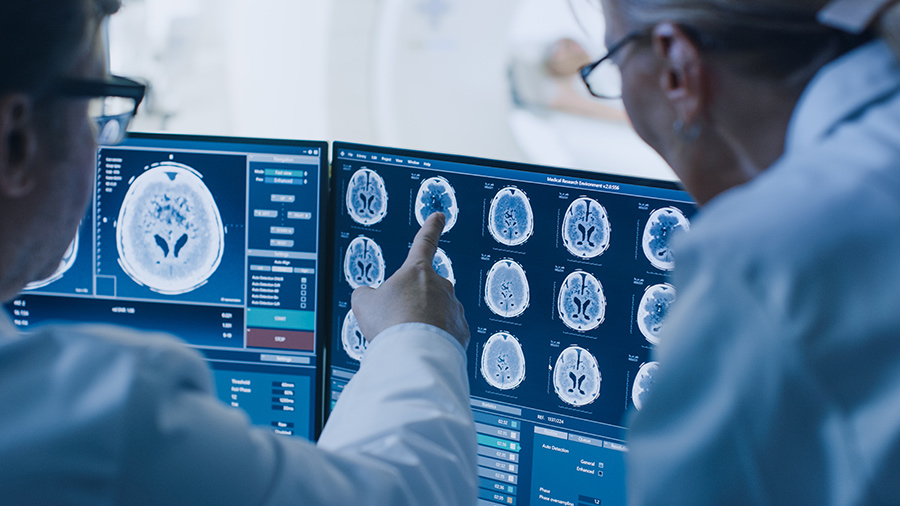
Medical imaging technologies have revolutionized the field of medicine by providing detailed visualizations of the human body’s internal structures, aiding in diagnosing, monitoring, and treating various medical conditions. Over the past few decades, medical imaging advancements have been made, enhancing its accuracy, efficiency, and safety. This blog explores the history, current developments, and future trends in medical imaging technologies, highlighting their impact on healthcare.
Medical imaging is critical to modern healthcare, allowing clinicians to diagnose and monitor diseases, guide surgical procedures, and develop personalized treatment plans. The field has undergone remarkable transformations from the early days of X-rays to the latest innovations in molecular imaging. This blog delves into the advancements in various medical imaging modalities, including X-ray, computed tomography (CT), magnetic resonance imaging (MRI), ultrasound, nuclear medicine, and emerging technologies.
The Evolution of Medical Imaging
1) Early Developments
The history of medical imaging dates back to the late 19th century when Wilhelm Conrad Roentgen discovered X-rays in 1895. This groundbreaking discovery allowed physicians to visualize bones and certain internal organs, revolutionizing the diagnosis of fractures and other skeletal conditions.
2) The Advent of Computed Tomography (CT)
In the 1970s, computed tomography (CT) was introduced. CT provides cross-sectional images of the body, offering greater detail and contrast compared to traditional X-rays. CT scanning has since become a staple in diagnostic imaging, particularly for detecting cancers, cardiovascular diseases, and traumatic injuries.
3) Magnetic Resonance Imaging (MRI)
Magnetic resonance imaging (MRI) emerged in the 1980s. It offers detailed images of soft tissues without the use of ionizing radiation. MRI utilizes powerful magnets and radio waves to generate images, making it ideal for imaging the brain, spinal cord, muscles, and joints.
4) Ultrasound Imaging
Ultrasound imaging, which uses high-frequency sound waves to produce images of internal structures, has been widely used since the 1950s. Due to its safety and real-time imaging capabilities, it is particularly valuable in obstetrics, cardiology, and abdominal imaging.
5) Nuclear Medicine
Nuclear medicine techniques, such as positron emission tomography (PET) and single-photon emission computed tomography (SPECT), use radioactive tracers to visualize physiological processes within the body. These modalities are crucial for detecting cancers, assessing heart function, and evaluating brain disorders.
Recent Advancements in Medical Imaging Technologies
1) Enhanced Imaging Resolution
Recent advancements in medical imaging have significantly improved image resolution, enabling the detection of smaller lesions and more detailed visualization of anatomical structures. High-resolution CT and MRI scanners now provide submillimeter spatial resolution, allowing for earlier and more accurate diagnoses.
2) Functional and Molecular Imaging
Functional and molecular imaging techniques have advanced our understanding of disease processes at the cellular and molecular levels. Functional MRI (fMRI) measures brain activity by detecting changes in blood flow, while PET and SPECT imaging visualize metabolic and biochemical processes. These techniques are instrumental in research and clinical practice, particularly in neurology and oncology.
3) Hybrid Imaging Systems
Hybrid imaging systems, such as PET/CT, SPECT/CT, and PET/MRI, combine the strengths of different imaging modalities to provide comprehensive diagnostic information. For example, PET/CT combines the functional information from PET with the anatomical detail from CT, enhancing the accuracy of disease detection and characterization.
4) Artificial Intelligence and Machine Learning
Artificial intelligence (AI) and machine learning transform medical imaging by automating image analysis, improving diagnostic accuracy, and reducing interpretation time. AI algorithms can detect patterns and anomalies in medical images, assist radiologists in identifying diseases, and predict patient outcomes. AI-powered tools are increasingly being integrated into clinical workflows, enhancing the efficiency and precision of imaging-based diagnostics.
5) Portable and Point-of-Care Imaging
The development of portable and point-of-care imaging devices has expanded access to medical imaging, particularly in remote and underserved areas. Handheld ultrasound devices, portable X-ray machines, and compact MRI scanners allow for bedside imaging, improving patient care in emergency and resource-limited environments.
6) Contrast Agents and Imaging Biomarkers
Advances in contrast agents and imaging biomarkers have enhanced the specificity and sensitivity of medical imaging. New contrast agents for MRI and CT provide better delineation of tissues and vascular structures, while targeted imaging biomarkers enable the visualization of specific cellular and molecular targets. These innovations are precious in oncology, where precise tumor characterization and monitoring are critical.
Impact of Advancements on Healthcare
1) Early Disease Detection and Diagnosis
Improved imaging technologies have significantly enhanced the ability to detect diseases early. High-resolution imaging, functional and molecular techniques, and advanced contrast agents allow for identifying subtle abnormalities that may not be visible with conventional methods. Early detection leads to more effective treatment and better patient outcomes.
2) Personalized Medicine
Medical imaging plays a crucial role in developing and implementing personalized medicine. By providing detailed information about a patient’s anatomy, physiology, and molecular profile, imaging helps tailor treatment plans to individual patients. This approach improves the efficacy of therapies and reduces the risk of adverse effects.
3) Minimally Invasive Procedures
Advancements in imaging have facilitated the rise of minimally invasive procedures, such as image-guided surgeries and interventions. Techniques like CT-guided biopsies, MRI-guided focused ultrasound, and endovascular interventions rely on precise imaging to navigate instruments and target specific areas. These procedures are less invasive, reduce recovery times, and minimize complications.
4) Improved Patient Monitoring
Advanced imaging technologies enable continuous and non-invasive disease progression and treatment response monitoring. Serial imaging studies can track tumour changes, evaluate the effectiveness of therapies, and detect recurrences early. This capability is precious in chronic conditions such as cancer and cardiovascular diseases.
5) Enhanced Research and Clinical Trials
Cutting-edge imaging technologies are essential tools in biomedical research and clinical trials. They provide insights into disease mechanisms, help identify potential therapeutic targets, and evaluate the efficacy of new treatments. Imaging biomarkers are increasingly used as surrogate endpoints in clinical trials, accelerating the development of novel therapies.
Future Trends in Medical Imaging Technologies
1) Integration of AI and Deep Learning
Integrating AI and deep learning into medical imaging is expected to continue advancing, with algorithms becoming more sophisticated and capable of handling complex diagnostic tasks. AI will enhance image acquisition, processing, and interpretation, leading to more accurate and efficient diagnoses. Additionally, AI-driven predictive models will aid in risk stratification and personalized treatment planning.
2) Development of Advanced Imaging Modalities
The development of new imaging modalities and enhancements to existing technologies will further expand medical imaging capabilities. Techniques such as photoacoustic imaging, optical coherence tomography (OCT), and hyperpolarized MRI are promising tools for visualizing tissues and molecular processes with unprecedented detail.
3) Precision Imaging and Theranostics
Precision imaging, which combines diagnostic imaging with targeted therapies (theranostics), is an emerging field with great potential for personalized medicine. By using imaging to guide the delivery of therapeutic agents to specific targets, theranostics aims to improve treatment efficacy and reduce off-target effects. This approach is promising in oncology and cardiovascular diseases.
4) Expansion of Point-of-Care Imaging
The expansion of point-of-care imaging will continue to improve access to diagnostic imaging, especially in resource-limited settings. Advances in portable imaging devices and telemedicine will enable remote consultations and real-time diagnosis, bridging the gap between urban and rural healthcare facilities.
5) Quantum Imaging and Nanotechnology
Quantum imaging and nanotechnology are poised to revolutionize medical imaging by providing unprecedented sensitivity and resolution. Quantum dots, nanoparticles, and other nanomaterials can be engineered to target specific tissues and emit signals detectable by imaging systems. These technologies can potentially enhance early detection, treatment monitoring, and drug delivery.
Ethical and Regulatory Considerations
1) Data Privacy and Security
Integrating AI and digital technologies in medical imaging raises data privacy and security concerns. Ensuring the confidentiality and integrity of patient data is paramount, and robust measures must be in place to protect sensitive information from unauthorized access and cyber threats.
2) Ethical Use of AI
AI in medical imaging must adhere to ethical principles, including transparency, accountability, and fairness. AI algorithms should be validated rigorously to avoid biases and ensure accurate and equitable outcomes. Additionally, human oversight remains crucial to interpreting AI-generated findings and making clinical decisions.
3) Regulatory Approval and Standards
Adherence to regulatory standards and guidelines is essential for developing and deploying advanced imaging technologies. Regulatory agencies such as the FDA and EMA play a critical role in evaluating the safety and efficacy of new imaging modalities and approving their clinical use. Compliance with regulatory requirements is essential to safely and effectively implement innovative imaging technologies.
The advancements in medical imaging technologies have transformed the healthcare landscape, enabling earlier and more accurate diagnoses, personalized treatment plans, and minimally invasive procedures. These innovations have significantly improved patient care and outcomes, from high-resolution imaging and functional techniques to AI integration and portable devices.
As the field continues to evolve, future trends such as precision imaging, theranostics, and quantum imaging hold great promise for further enhancing medical imaging capabilities. However, addressing ethical and regulatory considerations is crucial to ensure these technologies’ responsible and equitable use.
The continued advancement of medical imaging technologies will play a pivotal role in healthcare, providing clinicians with powerful tools to diagnose, treat, and monitor diseases with greater precision and efficacy. By embracing these innovations and addressing the associated challenges, we can look forward to a future where medical imaging improves patient outcomes and advances medicine.



